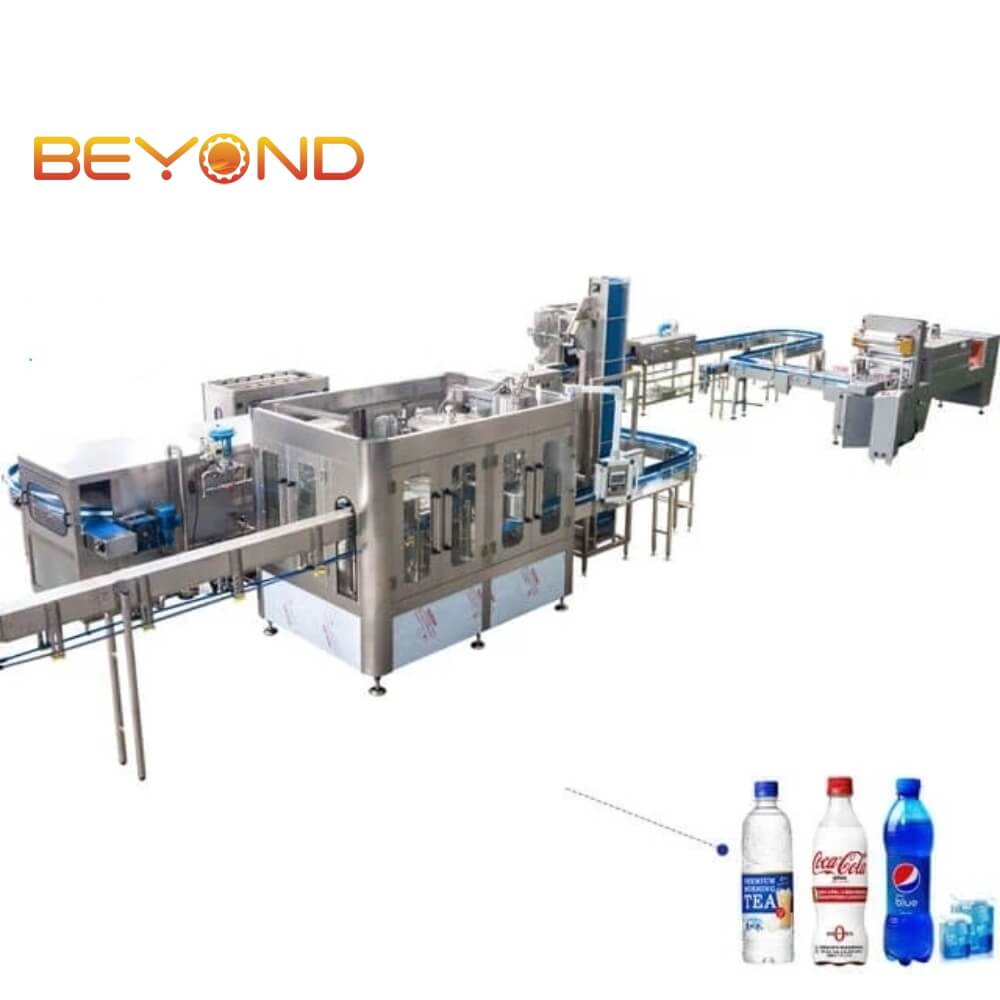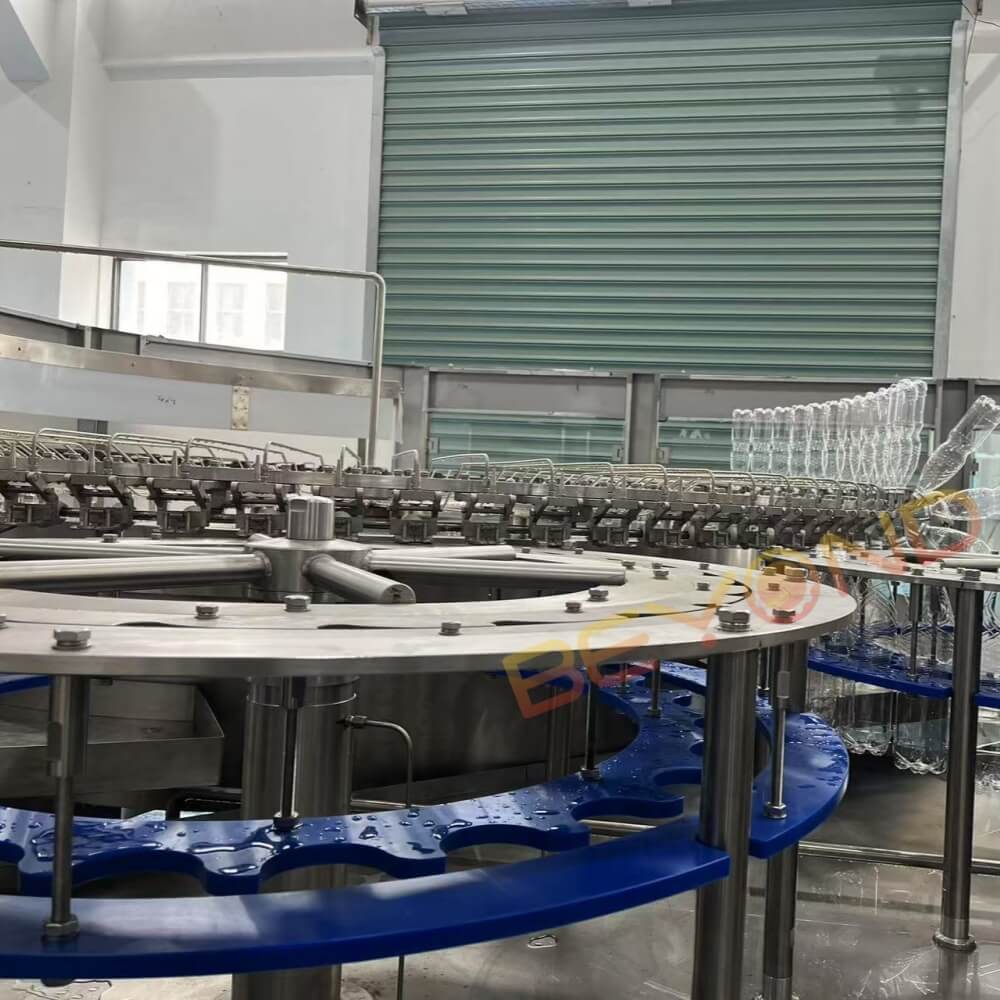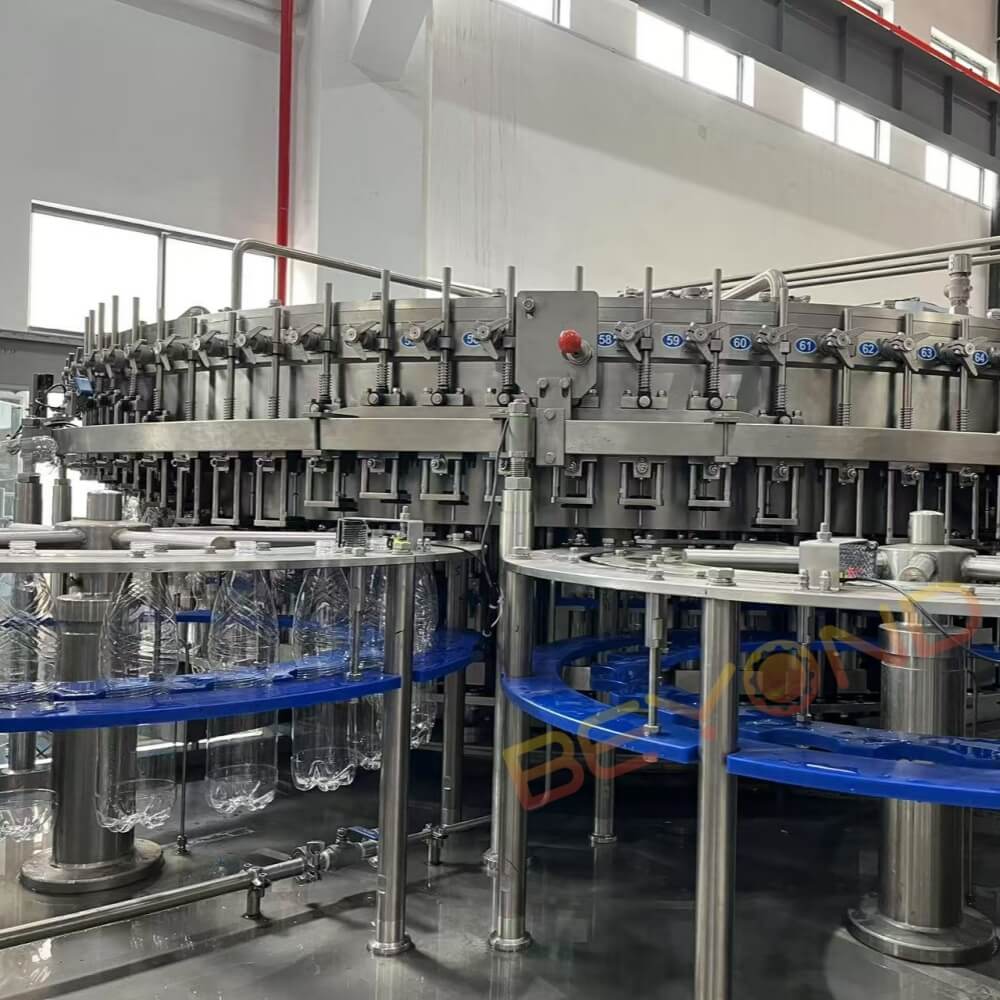The filling process of carbonated drinks is crucial for preserving carbonation, ensuring hygiene, and maintaining product quality. Key steps include carbonation, sterilization, filling, and sealing. During carbonation, CO₂ is injected under pressure to achieve the perfect fizz. Bottles are then sterilized using steam or chemical solutions before being filled with the carbonated beverage using counter-pressure filling machines that minimize carbonation loss. Finally, bottles are tightly sealed to maintain freshness. Precision in each step, along with modern technologies like smart filling systems and tamper-evident caps, ensures that every bottle delivers the refreshing, fizzy experience consumers expect.
Carbonation of the Beverage
Carbonation is the hallmark of fizzy drinks, achieved through the dissolution of CO₂ gas in liquid under pressure. This process creates the signature effervescence that defines these beverages. Without proper carbonation, drinks would be devoid of their distinctive bubbles and the refreshing sensation that consumers have come to enjoy.
An often underestimated factor in the carbonation process is the temperature at which it occurs. Beverage manufacturers commonly cool the liquid before introducing CO₂ to increase gas solubility. Colder liquids possess a greater capacity to absorb CO₂, leading to enhanced fizziness. Additionally, the carbonation tank and pressure control mechanisms are vital in this process, as they enable precise adjustments to achieve the optimal “fizz level” tailored to different beverages.
In recent years, counter-pressure carbonation systems have emerged as a significant advancement over traditional carbonation methods. These innovative systems enable manufacturers to carbonate liquids while simultaneously filling them under pressure. This approach markedly minimizes carbonation loss and guarantees a fresher, more effervescent product.
Carbon dioxide (CO₂) is introduced into the liquid within a chilled tank, usually maintained at pressures ranging from 3 to 5 bar for carbonated soft drinks. In contrast, sparkling waters may utilize lower pressures. Following this carbonation process, the liquid is transferred to the filling line, where measures are taken to minimize CO₂ loss. This approach ensures that the drink retains its carbonation throughout the subsequent stages of production.
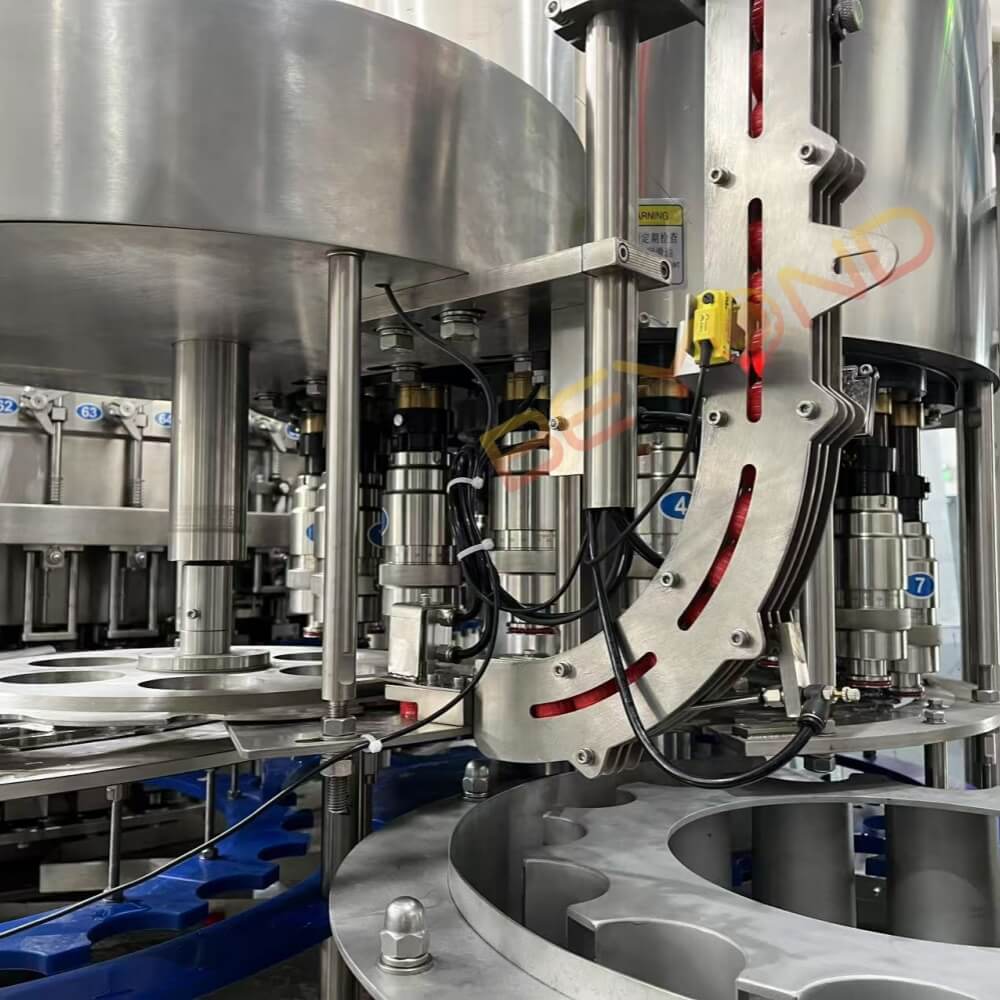
Sterilization and Cleaning of Bottles
Maintaining the cleanliness of bottles is essential for preventing contamination and ensuring product safety. Any residual substances within the bottle can adversely impact the taste, shelf life, and carbonation levels of the beverage.
The sterilization of bottles is typically accomplished through a combination of high-pressure steam, hot water, and chemical sanitizers, followed by an extensive rinsing procedure. However, bottles that exhibit microfractures or imperfections can undermine this process, creating opportunities for bacteria or fungi to thrive, which may ultimately spoil the beverage.
To enhance efficiency, manufacturers are increasingly adopting ultraviolet (UV) sterilization and ozone sterilization techniques. These methods provide effective disinfection while ensuring the complete absence of chemical residues, preserving the integrity of the beverage’s flavor and carbonation.
The Filling Process
The filling stage is crucial for preserving carbonation levels in beverages. This process entails carefully filling sterilized bottles with carbonated liquid, all while maintaining sufficiently high pressure to ensure that the carbonation remains intact.
The filling of carbonated beverages is accomplished using counter-pressure filling machines. These specialized machines fill bottles while carefully regulating internal pressure to prevent the escape of carbon dioxide (CO₂). To minimize foam production and ensure maximum carbonation retention, filling is typically conducted from the bottom or side of the bottles.
Precision in filling operations is of utmost importance. Even a minor deviation in the filling volume can result in issues such as overfilling, underfilling, or, more critically, loss of carbonation. Contemporary filling machines utilize advanced volumetric filling systems that incorporate highly accurate flow meters, guaranteeing that each bottle is filled to the exact specifications required.
A growing number of manufacturers are adopting smart filling systems that leverage sophisticated sensors and real-time data to dynamically refine the filling process. These sensors accurately monitor CO₂ levels and seamlessly adjust the filling speed. This innovation not only minimizes waste but also enhances the consistency of each fill, ensuring optimal product quality and efficiency.
Capping and Sealing
Following the filling process, capping is executed promptly to safeguard against external contamination and to preserve the beverage’s carbonation during storage and transportation. This crucial step ensures that the product remains intact and maintains its quality until it reaches the consumer.
Automated capping machines play a vital role in ensuring a secure seal for bottled beverages. These advanced machines operate with precision, employing high pressure to affix the cap firmly while preserving the integrity of the bottle. In the case of specific products, including health drinks and premium sodas, the capping process may incorporate tamper-evident seals, enhancing consumer safety and confidence in the product’s quality.
A notable trend within the industry is the increasing adoption of twist-off caps featuring linerless technology. These innovative caps not only minimize plastic waste but also improve sealing efficiency. By prioritizing both environmental sustainability and the preservation of carbonation, this development significantly contributes to extending product shelf life while aligning with eco-friendly practices.
Advanced torque sensors incorporated into capping machines guarantee that each bottle is sealed with the precise level of pressure required. Should a bottle fall short of the designated pressure threshold, it is automatically rejected from the production line. This meticulous quality control process ensures that only properly sealed products are delivered to the market, upholding industry standards and consumer safety.
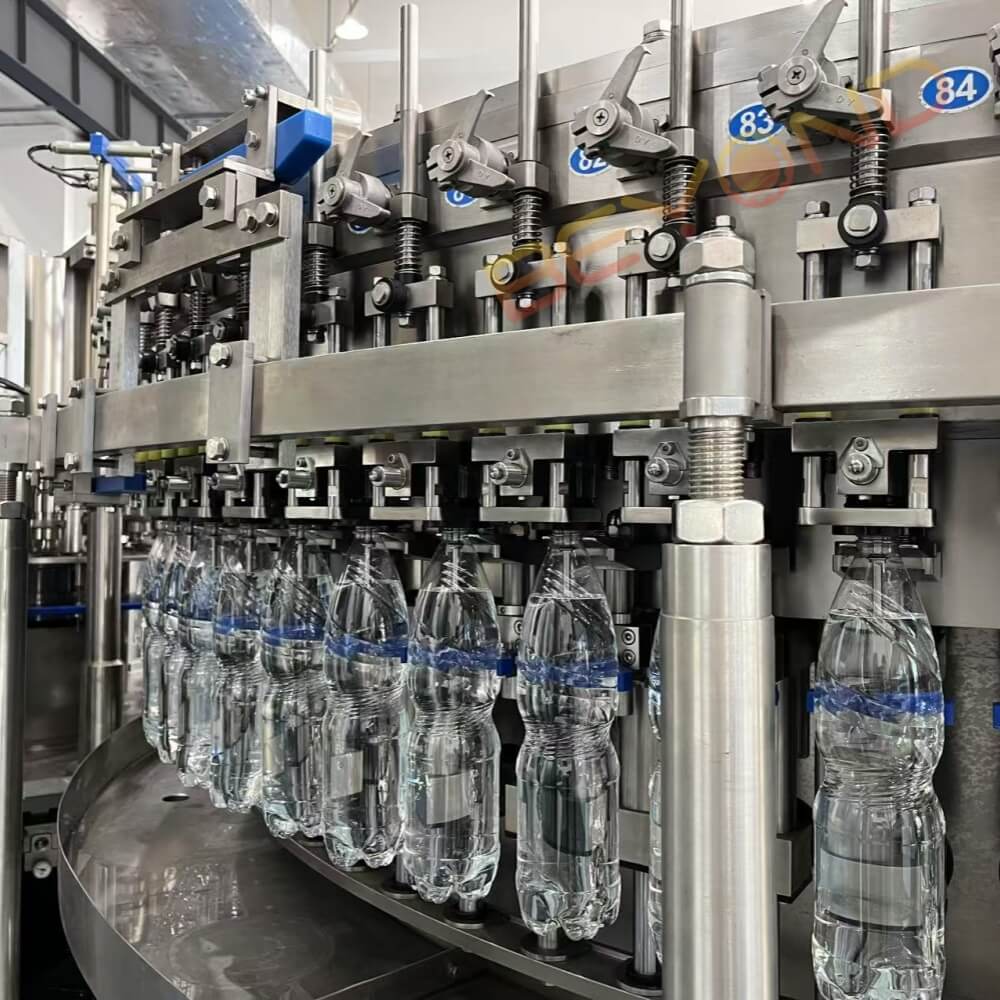
The Integrated Process
The filling process for carbonated beverages involves a complex, multi-step operation that demands precision and care. Each phase—ranging from carbonation to sterilization, followed by filling and sealing—requires stringent control to maintain quality, ensure safety, and preserve the distinct effervescence of the drink.
One of the most significant challenges facing the beverage industry is the need to maintain consistent quality throughout large production runs. Even slight variations in temperature, pressure, or bottle integrity can dramatically affect the carbonation and flavor profile of the final product. In response to this issue, many manufacturers are increasingly implementing closed-loop control systems. These advanced systems continuously monitor production parameters and automatically make necessary adjustments to ensure optimal quality and consistency.
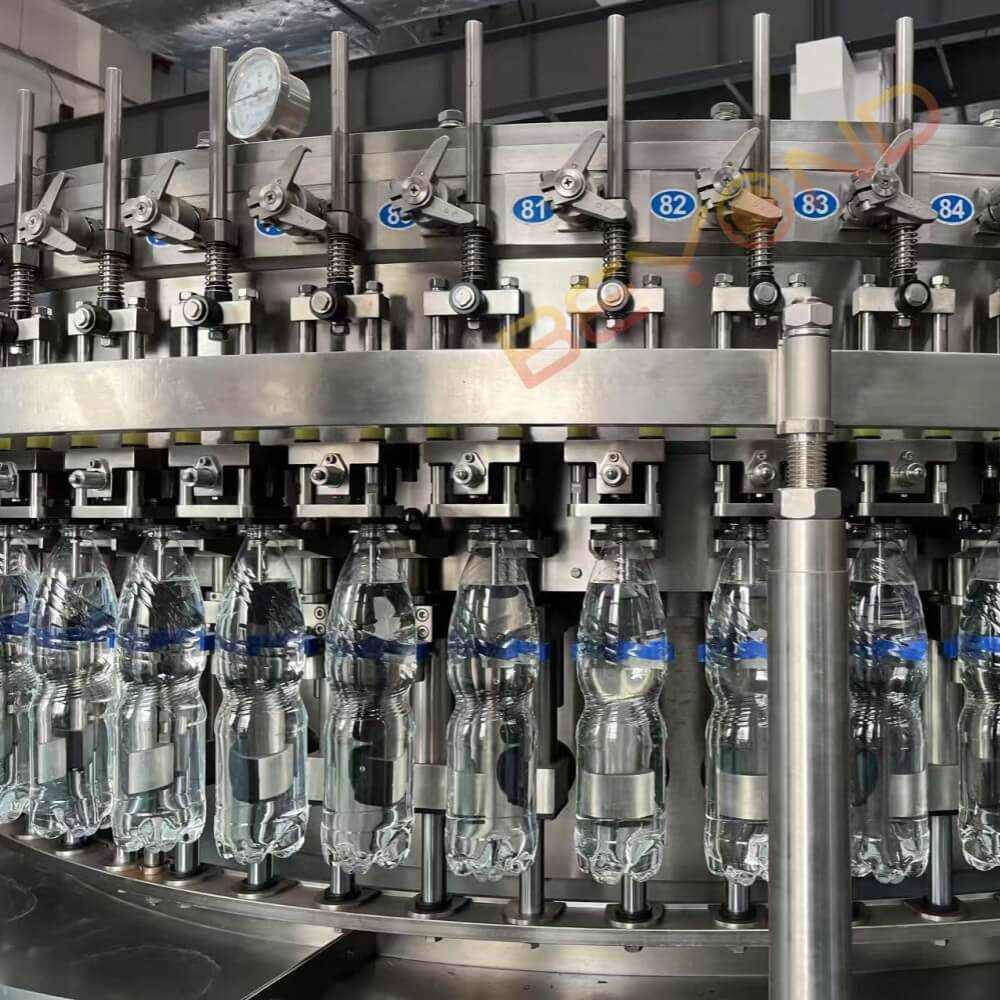
Conclusion
The filling process for carbonated beverages encompasses a series of interconnected stages, each vital to preserving product quality. Manufacturers that invest in cutting-edge technology—ranging from intelligent carbonation systems to sophisticated sterilization methods and high-precision filling machinery—are more adept at fulfilling consumer expectations for quality, consistency, and environmental sustainability. This strategic investment not only enhances production efficiency but also supports the growing demand for responsibly produced beverages.
In a competitive market where freshness and carbonation are essential selling points, a thorough understanding of the technical intricacies involved in each stage of the filling process is crucial. This knowledge enables companies to enhance operational efficiency, minimize waste, and consistently deliver the ideal beverage to consumers. By mastering these processes, businesses can maintain product integrity while meeting the demands of an ever-evolving market.

